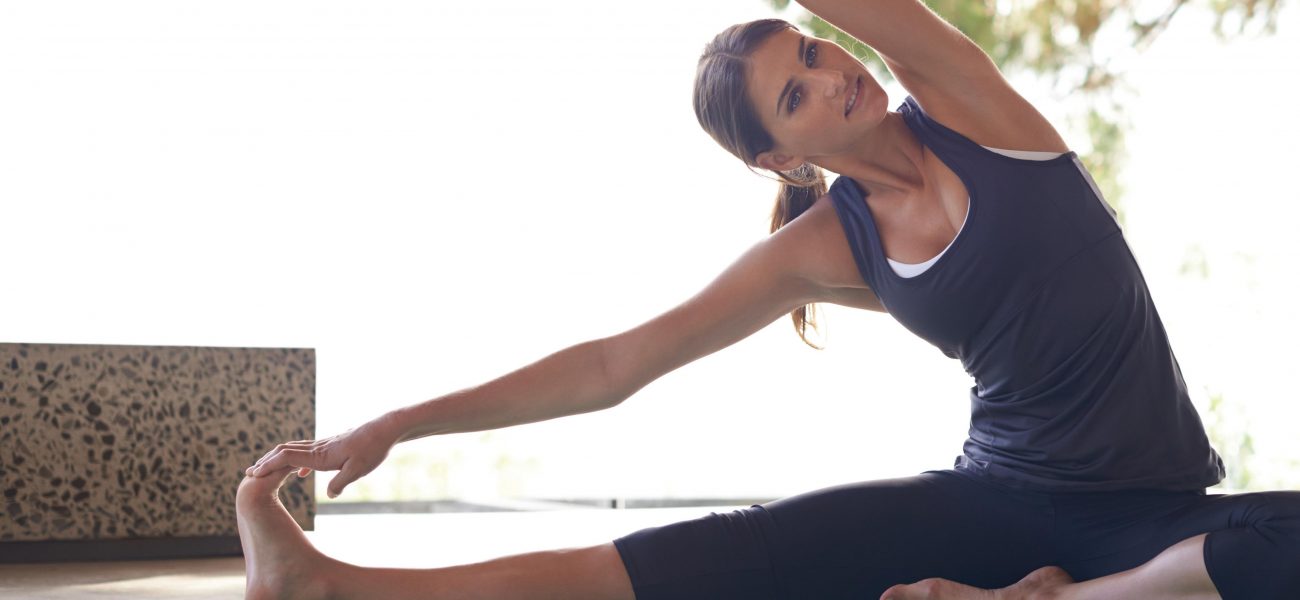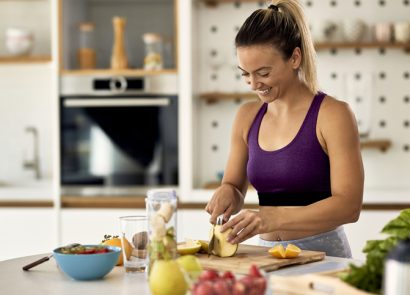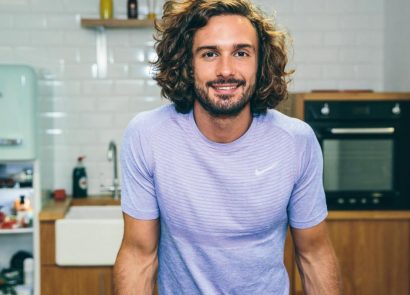Ever wondered how toddlers and children can perform cartwheels, squat low, and hang off monkey bars in the park, without complaining about back ache, or feeling stiff? Age isn’t as big of a factor in determining our range of movement as you might think, in fact, it’s more dictated by our lifestyle. “Following a simple and short stretching routine can do wonders for your body, particularly as we age,” says Roger Frampton. “Take 93-year-old gymnast Johanna Quaas, who can do cartwheels and headstands. It’s true that as we get older, our muscles become tighter, but her feats of flexibility prove that we can slow this process down.” With a school run at 8:30am, meetings starting from 9am, then social and box set commitments from 7pm, you’re probably trying to figure out where you can fit in the time to become more flexible. But 10 minutes a day is all you need, and we’ve got seven reasons why you should factor it into your schedule.
1. To age-proof your body
Nobody enjoys the thought of not being as mobile as they once were, but the numbers of dependent older people in the UK are projected to grow, from approximately three million in 2000, to almost seven million in 2051, an increase of 113 percent (jrf.org.uk). “Being flexible can not only reduce those daily aches and pains but, as we age, it can also help us with the simple tasks that become harder, such as picking things up from the floor and popping to the shops unassisted,” says Roger. To understand your baseline of flexibility, it’s good to see if you can do the following. “We should all be able to sit up straight, sit in a squat, hang from a fixed support, stand on one leg, arch our spines without pain, and place our palms on the floor with straight legs,” explains Roger. If you struggle with those exercises, read on to find out the movement goals to start off with.
2. To start to untighten
Our sedentary lifestyle has a huge impact on our mobility and movement, but there are ways to reduce the effect it has on the body. “Our hips become tight through sitting for hours on end, or just not using them fully,” says Roger. “This can put unnecessary pressure on the spine and lead to back pain.” While sitting can be tricky to avoid if you work a desk job, having a movement goal related to the problem area can help. “Learning how to sit in a squat not only aids you in eliminating pain, but, as a by-product, it improves a movement that if you are able-bodied, you should still be able to do, regardless of your age.” Don’t reserve your squatting for the gym. Try and aim for 10 minutes a day, and start slow, using a block, or some books, so you can get as low as possible.
3. To help you with other exercises
After-work netball practise and the weekend parkrun are the activities you love most, so why should you make time for working on your flexibility on top of that? “A decent range of motion in the body will support you in all physical activities, and in everyday tasks,” says Roger. “Improving your range of motion at a basic level will open up to a huge array of sports, and it will help you improve in the one you do, whatever that may be.” If you go running on a regular basis, stretching before, and after, will make you less susceptible to injury. The guideline amount for keen runners is around 10-15 minutes of warming up before you start moving.
4. To prevent injury
Don’t get confused, there’s a difference between the injuries we get from doing strenuous physical activity, and ones that occur through inactivity. “Injuries occur for a number of reasons so, to be clear, what we’re talking about here are preventative injuries that have occurred through the body being limited by movement, and becoming tight,” says Roger. This can be reduced by prioritising your spine. “It’s the last thing you want to hurt on your body, as it protects the central nervous system,” explains Roger. Maintaining a flexible body allows the spine to move freely, and function as it should. “All the exercises I teach are either static or slow-moving, giving you enough time to determine whether you feel pain, and to make sure you execute the move efficiently.” Think about the parts of your body that are restricted during the day, and that will give you an idea of what you need to work on. If you’re parked at a desk from nine to five, you’ll want to give extra attention to your hips and shoulders or, if you’re on the move, for example picking up toddlers and bags of groceries, concentrate on your back, how you hold yourself, and your squat technique.
5. To improve your circulation
Flexibility exercises and stretching have been shown to improve your circulation, and increase the blood flow to your muscles. Having good circulation can help protect you against a host of illnesses, from diabetes to kidney disease, and greater flexibility has even been linked to a lower risk of cardiovascular disease. Simple stretches that you can do at home to help with circulation include chair pose and downward dog, both of which will get your blood flowing in the right direction.
6. To de-stress
Making time for being more flexible on a daily basis can be a great way to channel your mindset into something that isn’t work commitments, family life or admin. “Training the body and stretching requires your full attention,” explains Roger. “It requires you to be present and mindful of bodily feeling, rather than mind thinking.” Be committed to the 10 minutes a day you take to practice your range of movement, and prioritise it as much as your other activities. Find a quiet space, make sure you’re undisturbed, and don’t forget to track your progress.
7. To gain confidence in your body
Working towards something that isn’t an aesthetic goal, such as toning your arms, can be a satisfying thing to do, and it will help you gain confidence in your body’s abilities. “As a movement coach, I focus solely on the function of one’s movement,” says Roger. “Can you touch your toes? If you can congratulations. Now choose a movement goal you can’t do and begin the steps to work on that.” Striving to improve the way your body moves and the function of your body is a body goal that isn’t cardio, weight loss, or based on the way you look and, if you set movement goals along the way, you’ll be able to see how you’re progressing.
How to get started…
The thought of doing handstands might seem a little unnerving at first but, if you work in stages, practising your flexibility will become a lot easier. “The safest and the most effective way I would teach a complete beginner to learn to do a handstand is to be comfortable holding the front support (a gymnastic plank) for one minute before raising your feet to a higher surface and repeating,” says Roger. “Once you’re happy doing this for one minute, the next step would be to face a wall and walk up it to practice having the weight on your hands. Build it up safely and slowly, using a wall and raised surfaces rather than just kicking up and hoping it works out.”




















